Hichame Alaouié on filming Olivier Masset-Depasse’s Duelles

As Duelles by Olivier Masset-Depasse is presented for is Wold Premiere at the Toronto International Film Festival in the Special Presentations category, Hichame Alaouié, SBC member and DOP of this beautiful film, was kind enough to answer our questions.
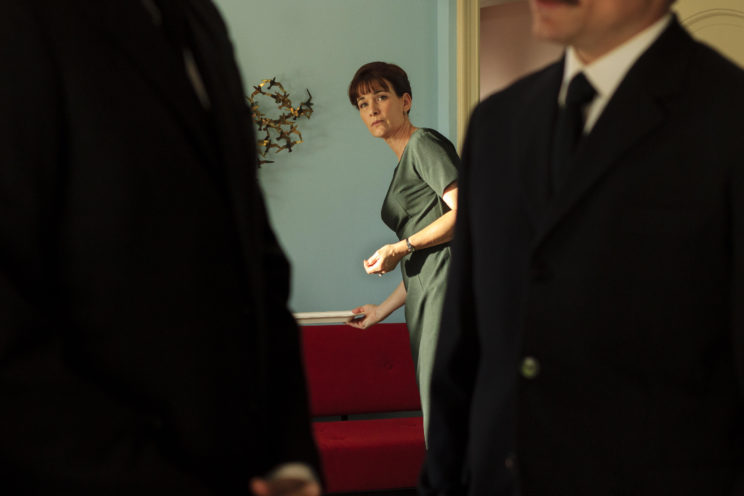
Synopsis: Brussels, at the beginning of the sixties, Alice and Céline are neighbours in twin town houses. They are the best friends in the world, just like their eight-year-old sons. This almost perfect harmony is shattered the day Alice helplessly attends the accidental death of Maxime, Celine’s son. Blinded by grief, Céline blames Alice for not having done everything to save her son. As a result the two friends relationship then starts to deteriorate ..
Cast: Veerle Baetens, Anne Coesens, Mehdi Nebbou, Arieh Worthalter, Jules Lefebvre and Luan Adam
Production: Versus Production, Haut et Court
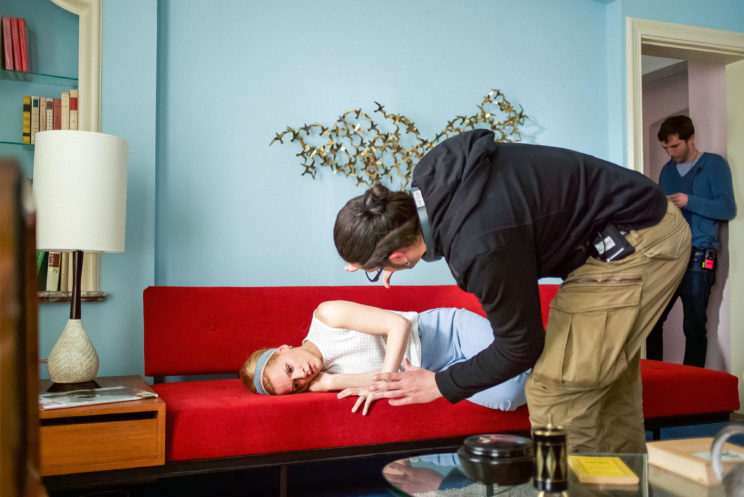
How did you land this project?
HA: This is my first job with Olivier Masset-Depasse. Until now, he regularly worked with cinematographer Tommaso Fiorilli, SBC, who was not available to do this project. I think that Versus, with whom I had already worked, recommended me. Our first meeting was very classic by having a discussion on the script. And it went very well.
What attracted you to this project?
HA: The fact that this is a period film that takes place in the 60s and at the same time it is a genre film; what I had never done before. Or rather a film that goes from genre to genre. It starts quite ordinary, the life of two families who live side by side, then very quickly and unexpectedly, the death of one of the children, will, of course, rock the film into a drama. We then follow the paranoia of the mother who witnessed the accident, and finally the film ends in a sort of a thriller. I found the script having, in my opinion, a very interesting and surprising trajectory. Finally, I felt the director had some ideas about the visuals that would please the sort of director of the photography I am.
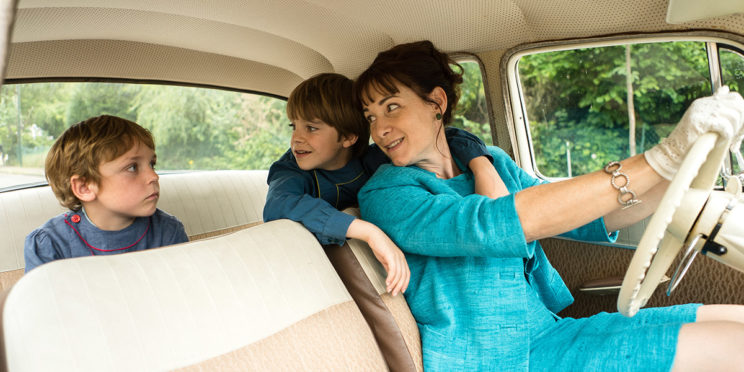
Exactly what were your visual intentions ?
HA: We used Hitchcock’s films as a reference. Visually Olivier wanted something close to the period sections of Tree of life by Terrence Malick. He wanted very glamorous images, beautiful with softness and character, and a bourgeois look of the 60s. In terms of lighting, Olivier wanted something soft and beautiful that would counteract the story’s darkness. As for the framing and staging, at first I think it was not very clear to him, Olivier is someone instinctive, and once we started filming this instinct finally pushed him to do a lot of camera movement : using steadicam, stab one, dolly, handheld, a bit of everything, but very few locked offshots. Despite the difficulty of the shots, we did something with a lof of coverage. There were no single sequence shots, but rather three or four sequence shots per scene. It was quite complex in the end, especially since we were on location in the two houses, some were often lacking space. And then there were lots of links between the interiors and its exterior surroundings, what was complicated to do, but all the more exciting I would say.
Did you have to solve particular problems?
HA: Basically, you might think it’s a simple film: there’s the main set of two houses side by side and their gardens. There are no stunts or vfx involved, or very complicated sequence shots. But because Olivier sets a high standard, and his desire to create camera movement, no day was easy, especially since, for budgetary reasons, we had a week less to shoot it compared to what one should have had. So we ended up doing one week with overtime, which resulted in often very long days. Despite this, Olivier managed to push his team to a higher level, thanks to his being so demanding and his ability not to give up while being instinctive. So I would say in the end that it went pretty well.
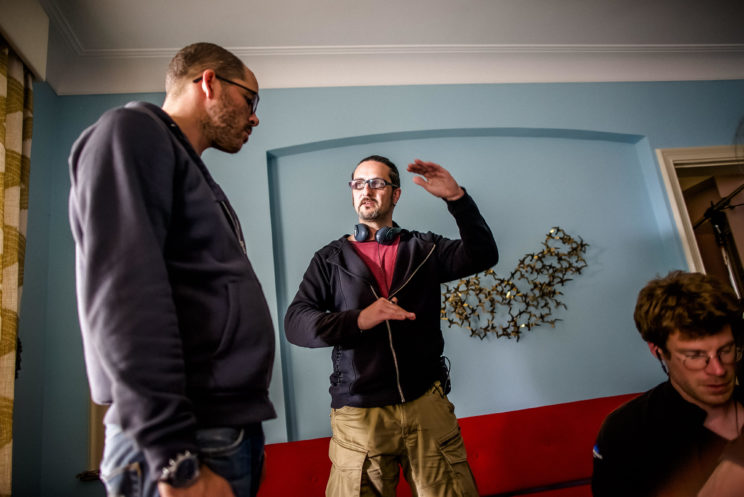
Did you had enough prep time then?
HA: We never have enough prep time! One could spent months in prep! As we shot listed everything, it took a while. But we had only two weeks of preparation and so we did not have time to go through everything. I learned that on a period film, you have to be very precise, if you see the windows, you have to check if the view outside is not too modern, how many period cars and extras are necessary, because that has implications on locations, but also for wardrobe etc. So in fact it’s the same as a contemporary film, except that you have to be a bit more spot on. There is little room for improvisation. Even if Olivier wanted to keep a certain form of freedom, which is normal.
How long and where did you shoot?
HA: We shot thirty days near Liège, at Cointe. We were very lucky when we found our main location, the two houses. They are located in a neighbourhood where the neighboring houses were of the same periode as well, so the authenticity of the place had been preserved, there is no real modern signage, paved sidewalk etc. It stayed a little in a 60s bubble. It is very quiet and green, so it corresponded very well to the style of setting we were looking for to set up the social class. One of the two houses was empty and for sale, the second was occupied by a family, but the production managed to rent it. It was important for the film to get that right because the houses and gardens are a bit of a character.
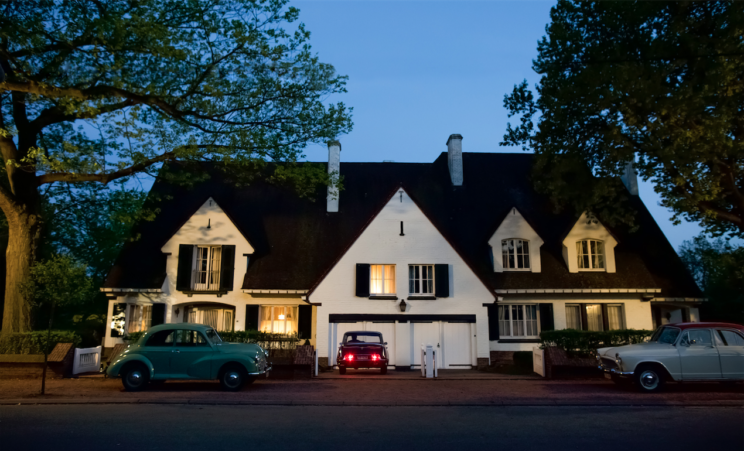
What kind of camera equipment did you use ?
HA: The main camera package was an Alexa Mini. I wanted to use anamorphic lenses to give a feel of that time period and to create the glamorous aesthetic that Olivier wanted. TSF (the equipment rental company), were able to provide us with Scorpio optics at a reasonable rate. They produce no major artefacts and give a certain character, aesthetic to the image. We also used a lot of filters in front of the camera: Soft FX or Classic Soft by day and Glimmer at night.
And for the lighting equipment ?
HA: The film features a lot interaction between what is indoors and what can be seen outside the windows. We shot in May and June 2017 and the weather was pretty beautiful. As the ceiling of the houses were quite low, we decided to push light in from the outside using big sources, 18KW or 9KW, to give us a certain freedom of movement in the set.
So most of the time you had a genie boom ?
HA: Not permanently, but especially for all these shots where we went from inside the house to outside and vice versa, the sources were then rigged on its platform in order not to have them in shot.
And for the nights?
HA: We used a lot of LEDs, which really look good on faces in terns of colors and do not take up to much space in a set with a low ceiling.
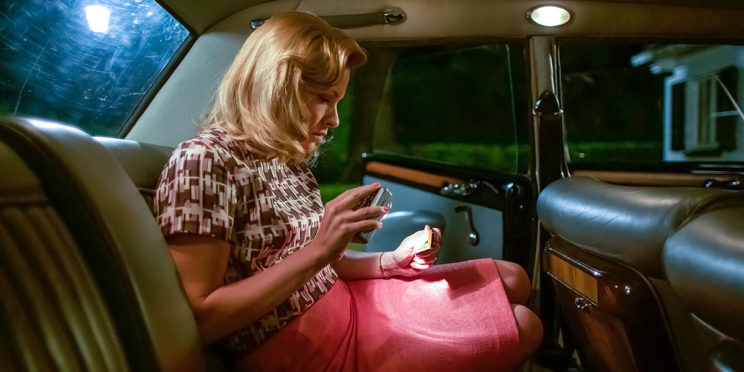
You had a lot of night work ?
HA: I would say a third of the film. Since we had a lot of scenes with the kids (well mostly one), we did a lot of day for night work. This has the advantage of not exhausting the crew, but at the same time has the disadvantage of requiring a lot of resources to do it the correct way. To avoid not having just a flat black behind a window that suddenly becomes a mirror, I planned for setting up blacked out tents. We even built a tent ten meters high by seven meters deep and ten meters wide because Olivier wanted a light effect of shadows of trees projected on the wall in the room of one of the children. Since the room was on the first floor, you had to give yourself distance to create these shadows.
Earlier on you talked about the fact that you used steadicam a lot, did you operate those shots yourself?
HA: No we had Jo Vermaerke on board as steadicam operator. He is very nice, very good, and above all he really invests in the film, which is not always obvious when you come only for a few days scattered throughout a shoot. On the other hand, I operated the shots using the Stab One. The shots done on steadicam are more beautiful in my opinion but, for financial reasons, we could only have it for a number of certain sequences, a total of about eight days. Jo also operated the second camera when he was there, and Nicolas Boucart, my key grip, operated the rest of the time.
The rest of the time you were rather on a dolly?
HA: Oh yes. As Nicolas (Boucart) pointed out to me, we used a lot of curved tracks. I think it comes from the three seasons that I did as DOP on the Bureau des légendes, where I tested a lot of things in terms of movement by adding curved tracks to the beginning, middle or end of a straight track which I find very interesting to create a certain form of dynamic. On the other hand, we were lucky because we were able to dolly on the floor in the house, as it was quite even. It allowed us to do a lot of very fluid shots impossible to do on tracks. For example, to dolly from the kitchen to the dining room via an S-shaped corridor, without having to resort to going handheld.
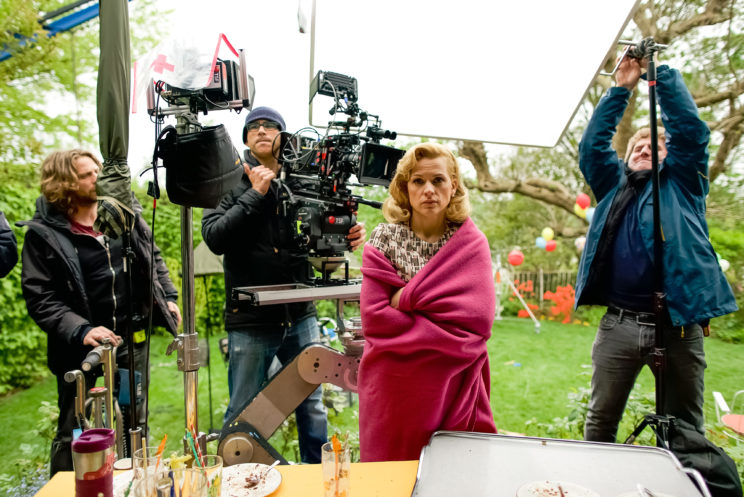
How was is to work with the actors?
HA: It went very well with all of them: Veerle Baetens, Anne Coesens, Mehdi Nebbou and Arieh Worthalter. It’s very nice to shoot with actors who stay on set during lighting setups because lighting a different face for another is not ideal. The child was incredible. He possessed great acting skills, to express, to pose, I was fascinated.
How was the collaboration with the other departments?
HA: We worked closely with art director, Anna Falguière. For our tests filmed at the location, she painted a choice of colours on large flats, which allowed us to choose them accordingly. In addition, I wanted to test the Scorpio lenses, because I had a doubt about the available focal lengths. The widest one was 32mm on which one could put a wide angle adapter. I wanted to check that we could do a full figure of our characters without having too much deformation, which was the case.
Having chosen our colors for the set, we also did tests for costumes, hair styles, and makeup on a stage. It was an important part of the artistic collaboration. With Rachel Beeckmans, the makeup artist, we worked on textures, lipsticks, beauty, glamor and so on. It was a great way to prepare and the result shows.
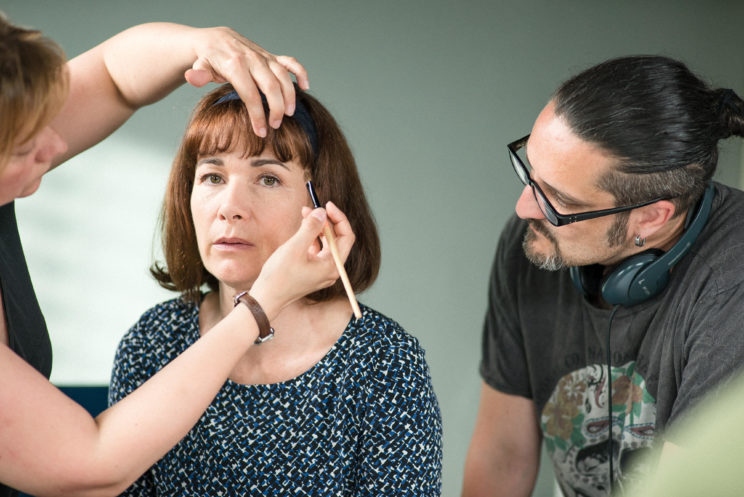
Do you know what was the budget of the film ?
HA: Around 3 million. And if I understood it correctly, it would have taken 4. On a period film, everything becomes quite expensive: a period car requires that it is being transported to set by truck for example, so costs rise very quickly.
So could you afford any expensive installations?
HA: Yes, the blacked out tent I mentioned. It was an important visual element for the director and the production did not want to shoot at night… The building of the tent required bringing in additional crew for its construction, disassembly, rental of equipment etc, so it necessarily costs a little money. Other than that, there was no big expense, except the anamorphic lenses, the days using a steadicam and genie booms. Nothing disproportionate.
How did the post process go ?
HA: The postproduction was handled by Mikros in Liège. Color grading was done in Paris, also at Mikros. We had eleven days of grading, which was not too much for this kind of film. Often, about ten days are enough, but for this film, there were many cuts and we also took care of some of the visual effects to limit the costs.
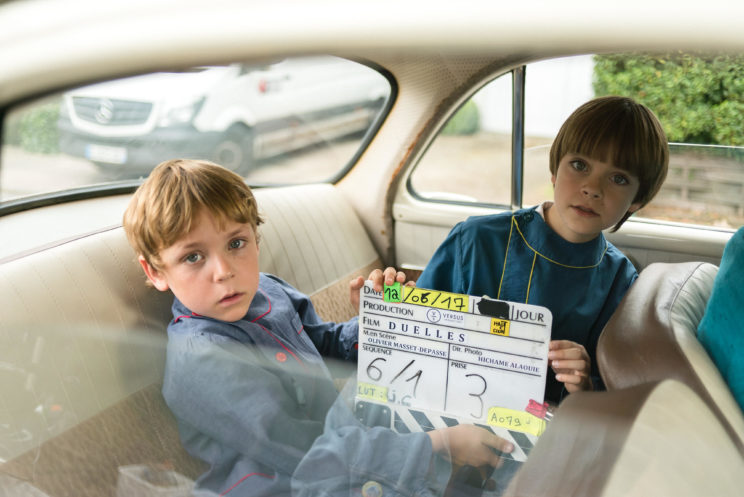
Did you add any grain to the DI ?
HA: Oh yes. Despite using the Scorpio lenses and the filtration, I found the image still too clean, so we added a thin layer of grain when necessary.
Did you use a LUT?
HA: Based upon the tests we filmed with the actors, the make-up, the costumes and the sets, I created some LUTs, which allowed us to shoot with something that looked aesthetically what we wanted and to have almost the same look on set, editing and grading. So Olivier was not surprised when he saw the final images in grading.
What do you think of the final result of the film?
HA: I find the film verywell made. Its visuals resemble what I had envisioned upon readingin the script. The story is well told, the actors are excellent, we believe the universe and the timeperiod. For me the film is successful in its core story and its form. It is a film that delivers on its ambitions, thanks to the tenacity of its director Olivier Masset-Depasse.

Equipment:
Camera: Alexa Mini, Scorpio, TSF
Light: TSF
Machinery: KGS
Crew:
1st AC: Olivier Servais
Gaffer: Jérôme Di Cola
Key grip: Nicolas Boucart
Steadicam operator: Jo Vermaerke
